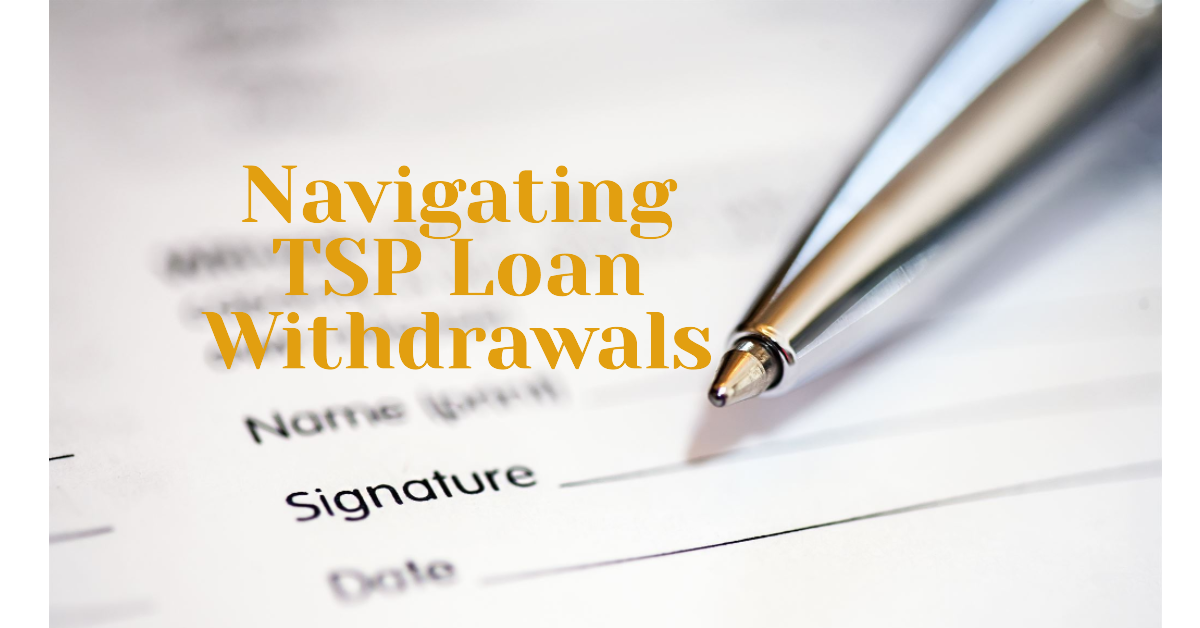Thrift Savings Plan (TSP) Loans – How Does It Work?
The Thrift Savings Plan (TSP) is a retirement savings plan available to Federal employees and members of the uniformed services. It allows participants to save for retirement by investing in a variety of funds. One of the unique features of the TSP is the option to take out a loan against your TSP account. In this article, we will explore how TSP loans work and provide a comprehensive guide on applying for and repaying these loans.
What is a TSP Loan and how does it work?
Understanding the Basics of Thrift Savings Plan Loans
A TSP loan is a type of loan that allows participants to borrow money from their TSP account. Unlike a personal loan obtained from a financial institution, TSP loans are not based on creditworthiness. Instead, the loan amount is determined by the participant’s vested balance in their TSP account. You repay the loan with interest in regular payments through a payroll deduction if you’re still in federal service, or by direct debit, check, or money order if you’ve left federal service. The interest rate, which stays the same for the life of the loan, is the same as the G fund interest rate for the month before you request the loan. The current TSP loan rate is 4.25%.
How to Qualify for a TSP Loan?
To qualify for a TSP loan, you must be an active Federal employee or a member of the uniformed services. Additionally, you must have sufficient funds in your TSP account to cover the loan amount requested. The loan must be repaid within a specific time frame, usually between 1 to 5 years or 5 to 15 years, depending on the type of loan.
Borrowing Limits
The minimum loan amount is $1,000 and the maximum loan amount is $50,000. Money invested in the TSP mutual fund window is not available for borrowing! For more information on the TSP mutual fund window: Inside Look at the TSP Mutual Fund Window
The maximum amount you can borrow is the smallest of the following:
- Your own contributions and earnings in the TSP account you want to borrow, not including any outstanding loan balance
- 50% of the total balance that is made up of your OWN contributions and earnings, including any outstanding loan balance or $10,000, whichever is greater, minus any outstanding loan balance
- $50,000 minus your highest outstanding loan balance, if any, during the last 12 months
How to Apply for a TSP Loan?
Step-by-Step Guide to Applying for a TSP Loan
To apply for a TSP loan, you need to follow a step-by-step process. First, you must log in to your TSP account online and navigate to the loan request section. Then, you will need to enter the loan amount and choose the type of loan you are applying for. After that, you will need to review and confirm the loan details before submitting the loan request for processing.
Eligibility Requirements for TSP Loan Application
As mentioned earlier, to be eligible for a TSP loan, you must be an active federal employee or a member of the uniformed services. Additionally, you must have sufficient funds in your TSP account to cover the loan amount requested. It is also important to note that you can only have two outstanding TSP loans, but only one primary residence loan, per account. That means you can have two general purpose loans for each account, or one general purpose loan and one primary residence loan.
Documents Needed for a TSP Loan application
When applying for a TSP loan, you will need to provide certain documentation. These may include proof of your employment as a Federal employee or a member of the uniformed services, as well as documentation of your vested balance in your TSP account. It is advisable to check the TSP website for the specific documents required for your loan application.
What are the Costs?
There is a one-time fee that comes out of the loan amount and is never returned to the account:
- $50 for a general purpose loan
- $100 for a primary residence loan
The largest cost of a TSP loan is the loss of compounding returns on the amount withdrawn. For example, if you withdraw $50,000 as a TSP loan for 5 years, the amount that has not been paid back will not accumulate any growth, dividends, or interest. While out as a loan, that $50,000 could have grown to $75,000 and you will have missed out on $25,000 of potential investment growth, which is far more of a cost than the $50 or $100 one-time fee.
What can a TSP Loan be used for?
Primary Residence Loan
If you are considering purchasing or constructing a primary residence, a TSP loan can be a viable financing option. The funds from a residential TSP loan can be used for the down payment, closing costs, or even the construction of the home. A primary residence loan has a term period of 5-15 years with a processing fee of $100 and does require documentation. It is important to carefully consider the terms and repayment schedule of the loan before proceeding.
General Purpose Loan
In addition to residential purchases, TSP loans can be utilized for various general purposes. Whether you need to pay off high-interest debt, cover medical expenses, or finance a major purchase, a TSP loan provides flexibility in how the funds can be used. General purpose loans have a term period of 1-5 years with a processing fee of $50 and do not require documentation. However, it is crucial to remember that the loan must be repaid within the specified time frame to avoid penalties and taxes.
Exploring Other Allowed Purposes for TSP Loans
Aside from primary residence purchases and general purposes, the TSP loan program allows for other specific uses. These include using the loan funds for education expenses, including tuition, fees, and books. Additionally, TSP loans can be used to prevent eviction or foreclosure, providing a safety net for participants facing financial difficulties.
How Does TSP Loan Repayment Options Work?
Understanding the Loan Repayment Process
Repaying your TSP loan is an essential part of the process. Once your loan is approved, you will need to start making regular loan payments. The payments are automatically deducted from your paycheck on a periodic basis. The loan repayment period is typically between 1 to 15 years, depending on the loan type.
Interest Rates and Loan Repayment Options
TSP loans have competitive interest rates, often comparable to or lower than other personal loan options. The interest on the loan is paid back into your own TSP account, ensuring that you benefit from the interest payments. The interest rate, which stays the same for the life of the loan, is the same as the G fund interest rate for the month before you request the loan. The current TSP loan rate is 4.25%.
Consequences of Not Repaying Your TSP Loan
It is crucial to make timely loan payments to avoid negative consequences. If you fail to make loan payments, the outstanding loan balance may be deemed taxable income for federal and state taxes, potentially resulting in additional taxes owed such as a 10% early withdrawal penalty if under the age of 59 1/2. Additionally, the loan may be declared in default, resulting in the distribution of the remaining loan balance and potentially impacting your retirement savings.
What if You do Not Pay Off the Loan by Retirement or Leave Federal Service?
You cannot take a new loan after you separate from service. If you haven’t paid off the loan by retirement, you have three options:
- Keep the loan active by setting up monthly payments by check, money order, or recurring direct debits. The payment will be changed to a monthly schedule, if necessary; however, the maximum time limit for paying off your loan will still apply.
- Pay off the loan by the required deadline.
- Allow the loan to be foreclosed and accept any taxable portion of the outstanding balance and accrued interest as taxable income.
Benefits and Considerations of Taking Out a TSP Loan
Advantages of Borrowing From Your TSP Account
Taking out a TSP loan offers several advantages. Firstly, the application process is relatively straightforward, with no credit check necessary. The interest rates are also competitive, making it an affordable borrowing option. Additionally, repaying the loan with interest ensures that the interest payments benefit your own TSP account.
Factors to Consider Before Taking a TSP Loan
While TSP loans have their benefits, there are several factors to consider before taking out a loan. Firstly, borrowing from your TSP account reduces the funds available for retirement savings. Additionally, missing loan payments can have severe consequences, including tax liability and potential impacts on your retirement plans. It is crucial to weigh the pros and cons before proceeding.
Comparison With Other Types of Personal Loans
When comparing TSP loans with other types of personal loans, there are distinct differences. TSP loans do not involve credit checks and offer competitive interest rates. However, they have specific eligibility requirements and must be repaid within a set time frame. It is essential to assess your individual needs and financial situation to determine which loan option is most suitable for you.
Reach Out to Us!
If you have additional federal benefit questions, contact our team of CERTIFIED FINANCIAL PLANNER™ (CFP®) and Chartered Federal Employee Benefits Consultants (ChFEBC℠). At PlanWell, we focus on retirement planning for federal employees. Learn more about our process designed for the career federal employee.
Preparing for federal retirement? Check out our scheduled federal retirement workshops. Sign up for our no-cost federal retirement webinars here! Make sure to plan ahead and reserve your seat for our FERS webinar, held every three weeks. Want to have PlanWell host a federal retirement seminar for your agency? Reach out, and we’ll collaborate with HR to arrange an on-site FERS seminar.
Want to fast-track your federal retirement plan? Skip the FERS webinar and start a one-on-one conversation with a ChFEBC today. You can schedule a one-on-one meeting here.








